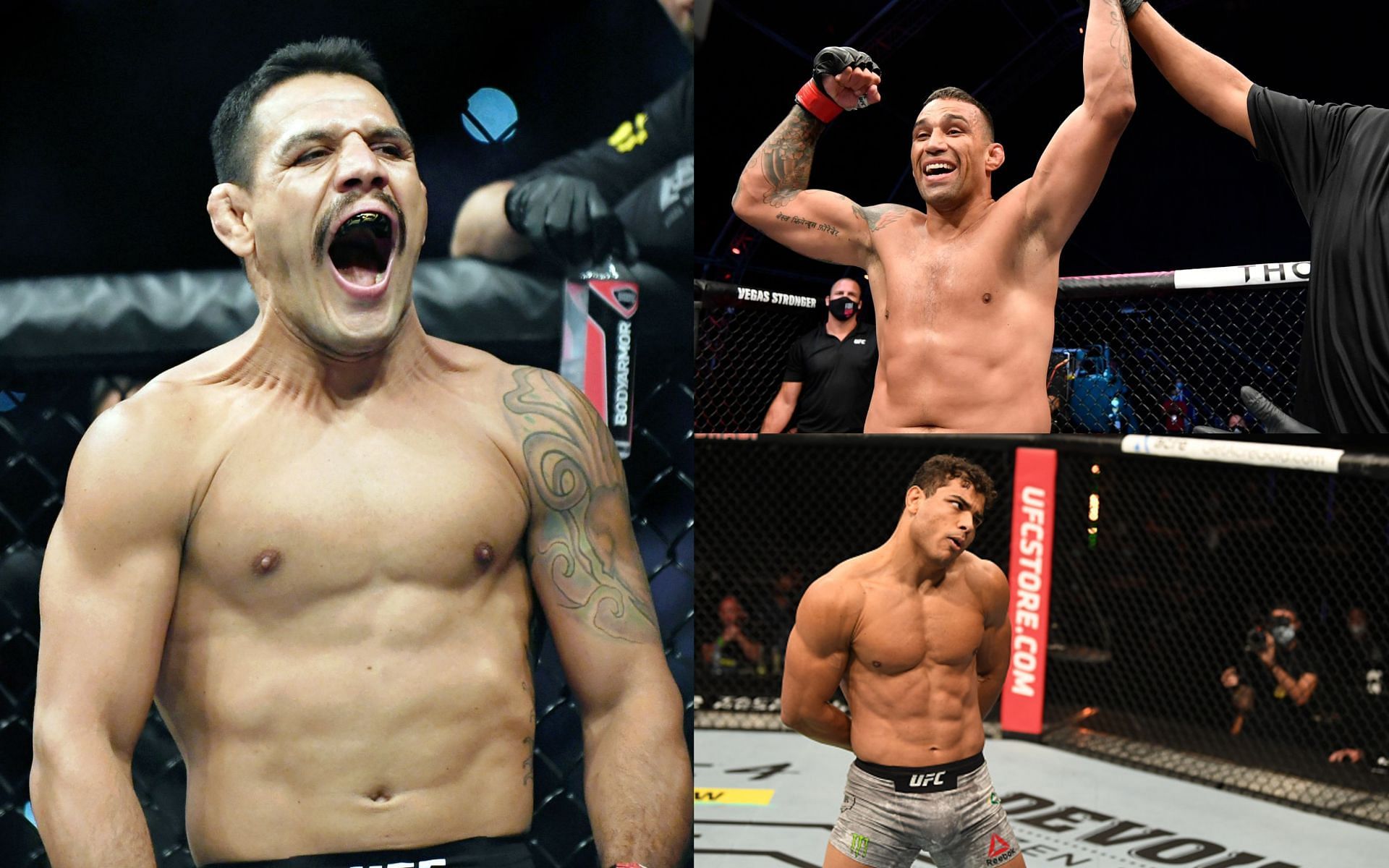
5 BJJ specialists who became good strikers in the UFC
The UFC has a fundamental connection to Brazilian jiu-jitsu. The promotion was founded in 1993 when martial artists from across the globe came together to find out which fighting style reigned supreme. Among the hulking wrestlers and heavy-handed power-punchers was a small, unassuming man called Royce Gracie.
He was dressed in a white gi and practiced Brazilian jiu-jitsu, a grappling art with which his foes were unfamiliar. In the span of one night, he defeated three men to be crowned the UFC 1 tournament winner. Afterwards, the combat sports world realized it had a lot to learn and Brazilian jiu-jitsu became a staple in MMA.
But as the years passed, being a skilled BJJ specialist was no longer enough. Fighters now need to be experts in wrestling and striking as well. In some rare cases, fighters who were originally BJJ grapplers became strikers after discovering kickboxing, boxing, etc. This list looks at five such mixed martial artists.
#5. Gilbert Burns, UFC welterweight
As a third-degree Brazilian jiu-jitsu black belt, three-time World Champion and World Cup gold medalist in competitive BJJ, Gilbert Burns is one of the most credentialed grapplers in the UFC. While his grappling skills render him an extremely dangerous foe on the mat, his striking has evolved tremendously.
It should be noted that 'Durinho' isn't an exceptionally skilled striker, he is instead an extremely effective one. His compact build means he's often shorter than his opponents, so he specializes in punishing foes who try to stick on the end of jabs. Furthermore, he's at his most effective at close range.
The former welterweight title challenger has two nuclear weapons in the pocket: a left hook and an overhand right. Against jabs, he throws calf kicks the moment his opponents extend their stance and expose their lead leg. This destabilizes his opponent's stance and opens them up to looping counterpunches over the jab.
#4. B.J. Penn, former UFC lightweight/welterweight
It's unfortunate that a glance at B.J. Penn's record would leave most modern-day UFC fans with the impression that he wasn't an elite fighter in his prime. But 'The Prodigy' was once so skilled that even Anderson Silva hailed him as potentially the greatest mixed martial artist of all time.
At the onset of his career, the future lightweight titleholder was a Brazilian jiu-jitsu dynamo with slick submissions and a highly effective guard-game. But over time, he developed a crisp boxing style that complimented his grappling. Foes were often too scared to take him down for fear of landing in a counter-choke.
Thus, they were forced to engage Penn in boxing exchanges where 'The Prodigy's' speed and fluid combinations rendered him dangerous against nearly anyone. His head movement was slick and his reaction time was outstanding.
#3. Paulo Costa, UFC middleweight
Paulo Costa's early years have faded into the background of forgotten MMA folklore. But 'Borrachinha' was once a TUF competitor who failed to achieve much success. At the time, he didn't have a strong grasp on his stylistic identity as an MMA fighter. He was a skilled Brazilian jiu-jitsu grappler but had nothing else.
Despite his natural abundance of physical strength, he didn't have the dedicated takedowns or the cardio necessary to use a main grappling style. After returning to the Brazilian regional MMA scene, he reinvented himself into a crushing pressure fighter. His footwork improved as he cut off his opponent's angles.
He stepped across any opponent who tried to circle away from him and used a right-round kick to the midsection as a physical barrier to stop anyone from circling away. When they tried to circle in another direction, he battered them with left hooks to the head and body as he trapped them between himself and the fence.
It led to an impressive unbeaten run before he crossed swords with Israel Adesanya and lost in humiliating fashion.
#2. Fabricio Werdum, former UFC heavyweight
Years ago, Fabricio Werdum was helpless in any striking exchange. His bread and butter were his Brazilian jiu-jitsu skills, which are among the greatest in heavyweight MMA history. Unfortunately, as is the case with most pure BJJ grapplers, he lacked the takedowns to consistently drag his foes to the mat.
Despite his shocking submission win against the legendary Fedor Emelianenko, 'Vai Cavalo' was completely unable to secure any takedowns against Alistair Overeem in their initial rematch during their Strikeforce days. He even begged his foe to grapple with him on the mat in one of his most embarrassing moments.
Thus, the transformation he underwent from Rafael Cordeiro's tutelage shocked everyone. He developed a dangerous Muay Thai game and effectively used a double collar-tie to tug his opponent's head into knees. Alternatively, he'd ram knees into the midsection.
His striking became so effective that he outstruck the then reigning heavyweight champion Cain Velasquez at UFC 188, which convinced the American to attempt an ill-fated takedown. 'Vai Cavalo' countered with a guillotine-choke and the rest is history.
#1. Rafael dos Anjos, UFC lightweight/welterweight
Rafael dos Anjos hasn't secured an absurd number of submission wins across 46 bouts as a professional MMA fighter. Instead, the skills he acquired as a fourth-degree Brazilian jiu-jitsu black belt enabled him to neutraize his opponents on the mat and outgrapple them with positional dominance.
This was part of his primary gameplan when he first debuted in the UFC. But after being outclassed by Khabib Nurmagomedov, he made a change that led to his capture of the divisional throne from Anthony Pettis. Like Fabricio Werdum, 'RDA' developed an effective Muay Thai game under Rafael Cordeiro's guidance.
He incorporated hard low kicks and sweeping strikes that crowded the space around his opponents, making it easy for him to pressure his foes towards the fence where he unloaded brutal combinations.
